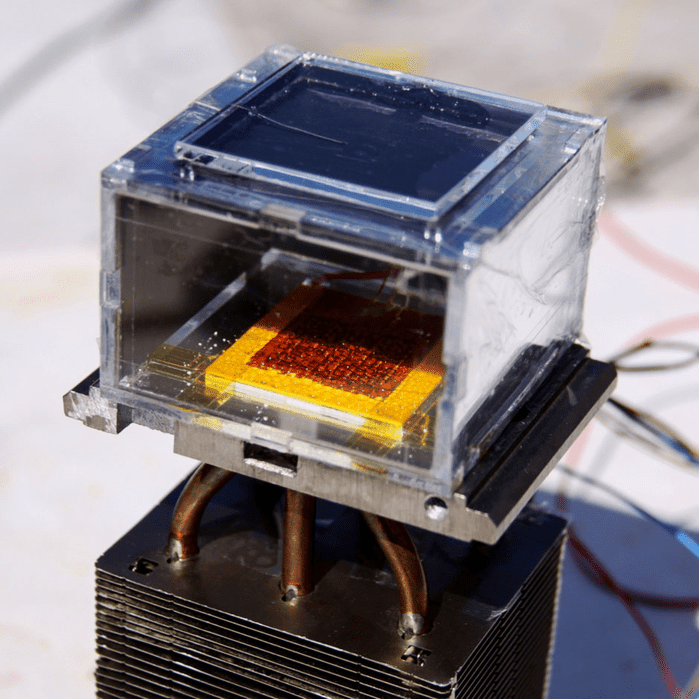You can’t squeeze blood from a stone, but you can squeeze water from thin air — even in the driest areas of the world.

The new water harvester is made of metal organic framework crystals pressed into a thin sheet of copper metal and placed between a solar absorber (above) and a condenser plate (below). Image credits: Wang Laboratory / MIT.
The device you see above can produce nearly 3 liters of water per day, and researchers say they can make it work even better. The key to their success is a family of crystalline powders called metal organic frameworks, or MOFs. MOFs are compounds consisting of metal ions or clusters which form 2D or 3D structures. They are a special type of polymers, often porous. To the naked eye, they would look pretty much like sand, each granule riddled with holes into which gases and molecules of interest can be selectively allowed to pass or blocked. Then, they’re brought in and compacted, making it possible to store a lot of gas in small containers.
Omar Yaghi, a chemist at the University of California, Berkeley, first demonstrated MOFs 20 years ago. Since then, he and others have developed several types of applications for them, including membranes that absorb and later release methane, acting as a carbon tank for cars. In total, over 20,000 types of MOFs have been developed, but one, in particular, is extremely interesting.
In 2014, Yaghi and his colleagues synthesized an MOF that is extremely efficient at absorbing water from thin air, even under extremely low humidities (like those in the driest places on Earth) — now, they’ve taken it a step further. Working with Evelyn Wang, a mechanical engineer at the Massachusetts Institute of Technology (MIT) in Cambridge, he turned this idea into a functional device which basically harvests water from thin air.
In a study published in the journal Science, they describe the mechanism, showing that it can pull 2.8 liters of water from the air over 12 hours — even in conditions with 20 or 30 percent humidity.
“It has been a longstanding dream” to harvest water from desert air, says Mercouri Kanatzidis, a chemist at Northwestern University in Evanston, Illinois, who wasn’t involved with the work. “This demonstration … is a significant proof of concept.”
However, this is just a proof of concept, and they’re still a ways away from making it viable. For starters, the entire system relies on a zirconium-based MOF, and zirconium costs $150 a kilogram, making such water harvesting devices simply too expensive to work. The next step is to replace the expensive zirconium with the much cheaper aluminum.
This all-purpose solution could make a big difference for the millions of people living in water-deprived areas. According to UNICEF, 400 million children constantly deal with water scarcity. Other solutions have also been approached, but they typically require significant humidity in the air to work — this one works with almost no humidity. At this point, it’s not clear if a potential widespread deployment of such systems will have a collateral effect on the environment.
Image credits: Hyunho Kim et al — Water harvesting from air with metal-organic frameworks powered by natural sunlight. DOI: 10.1126/science.aam8743









